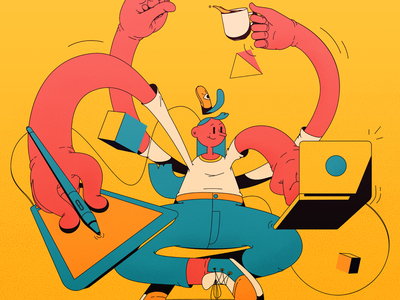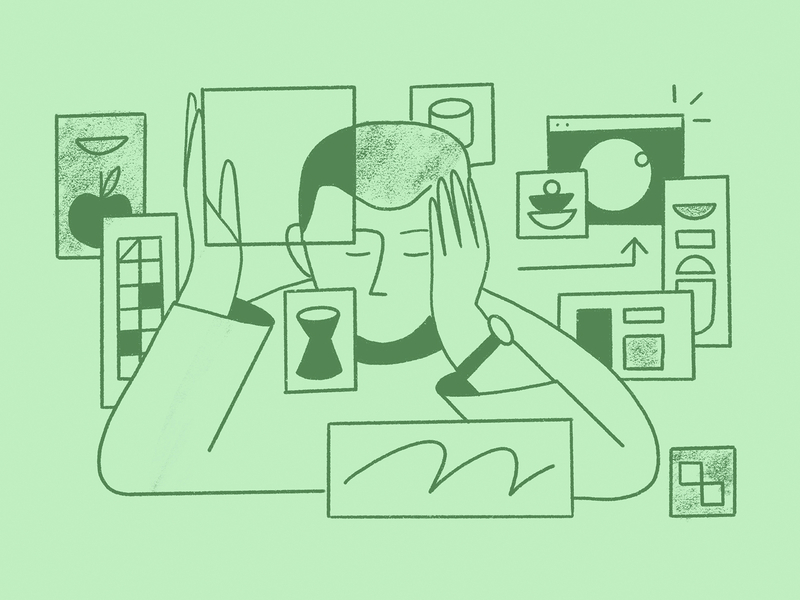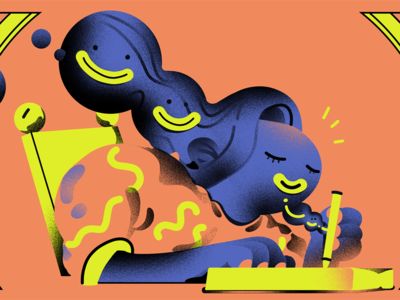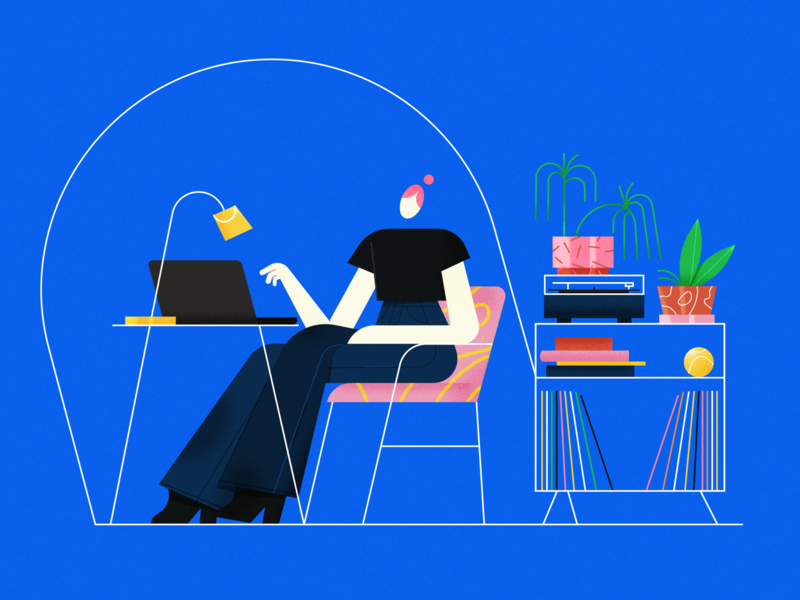These days, at any given moment, we’re faced with multiple distractions, notifications, and alerts, all vying for our attention. This is especially true, and even amplified in remote work environments. At any given moment, I usually have Slack, my email, iMessage, and my calendar open, plus my phone on my desk—five avenues through which people can reach me.
There’s no question that this technology is amazing. It allows our teams to collaborate and build relationships with people who are miles away, some of whom have never even met in person, or would never have had the opportunity to work together otherwise. That said, as much as it can be a blessing, it can also be an incredibly distracting curse if not managed properly, and can make our jobs much harder, rather than easier.
It’s also the case that these days, many of us wear many hats at work, and our roles are much more nuanced. We often have a variety of different responsibilities and tasks on our plate, that require many different tools and software to get work done. This means being able to context-switch regularly and, ideally, proficiently.
Is multitasking actually productive?
The temptation to try and pay attention to these different communication channels all at once, or juggle both a Slack conversation and work on another project at the same time is real—but more often than not, trying to divide your attention between a multitude of communication mediums is not the most effective way to work and collaborate.
I’ll be the first to admit that I regularly try to fool myself into thinking that I can multitask effectively. I’m guilty of sending emails or Slack messages while I’m in a meeting, or jumping in and out of my email inbox throughout the day. But ironically, research has shown that heavy multitaskers are less competent at doing several things at once than light multitaskers . In contrast to almost every other circumstance where practice makes perfect, the more you do it, the worse you are at it.
If reading that felt like a rude awakening (it did for me!), then read on… Here are four approaches we employ at Dribbble to reduce distractions coming from the technology we use, and our bad habits around multi-tasking.
1. Minimize context-switching
One strategy for combating the urge to tab between work and Slack is to time block your tasks. For example, try blocking out one hour of your day just to answer emails—30 minutes at the beginning of the day, and 30 minutes at the end (depending on how much time you need). We advocate for literally blocking off the time you need to complete the task in your calendar. This will help create accountability to stay focused on finishing one task at a time and to give it your full attention, rather than trying to juggle multiple tasks at once, which may be less effective and more time-consuming.
This also helps create clarity for your teammates, so they know when they can reach you, and when you’re tied up. Using a Pomodoro timer is a similar technique—limiting your time on one task to 25 minutes, and then taking a short break before spending another 25 minutes on it, or shifting to another task.
2. Treat your focus time as sacred
While remote work can provide lots of opportunities for quiet, focused time, giving yourself permission to take full, uninterrupted advantage of this requires discipline. To help set yourself up for successful “deep work” periods, schedule time periods where you can turn off your Slack notifications, silence your phone, and close your email! Be extra diligent about treating this time as sacred, heads down time.
Remote teams are collectively responsible for creating an environment where it’s ok to not be immediately responsive all the time. So, ensure that your expectations around being online and responsive on Slack are clarified to your whole team. At Dribbble, for example, we have a “no meetings on Thursday and Friday” policy, and on these days, the team can count on having more heads-down time.
3. Write it down
Even when you’re single-tasking, it’s inevitable that distracting ideas and thoughts will pop into your head. In those cases, keep a pen and paper handy so that if you remember a to-do item for another task midway through another task, you can quickly jot it down and come back to it later, rather than interrupt your current work.
Another handy trick, if you don’t want to turn off your notifications, is to use the “remind me” function in Slack, which essentially snoozes messages until you’re ready to come back to it. This is especially useful for when requests come through that don’t require your immediate attention, and can wait until you’ve finished more pressing tasks.
4. Create a system that works for you
Ultimately, creating a system that works for you and your working style is crucial. What works for your colleague may not work well for you, so trial and error will probably be the best way to see what resonates and what doesn’t.
The first step in breaking your multitasking habit is being aware of it. If you find yourself multitasking unconsciously, make note of when and in what situations, so you can be more mindful of avoiding it in the future. Establishing rituals and habits will help you train your brain, and eventually, auto-pilot will kick in so you’ll be able to context-switch and shift into deep work mode more seamlessly and effortlessly!
Closing thoughts
The reality of working on a fully remote team is that the same technology that feels like a blessing to have can sometimes turn into a source of frustration, and distraction. Like any skill, mitigating these different distractions and urges to multitask that are so often inherent (and even amplified in remote work environments), is one that can be learned. It just takes practice and requires you to hold yourself accountable to the processes that will set you up for success for productivity. It also requires a team-wide commitment to collectively create and foster a culture in which it’s acceptable to turn off your notifications when it’s required, or to limit meetings, where you’re required to context-switch, to certain days of the week.
To be clear, I recognize that it’s not always realistic or necessary to turn off all of our notifications. A compelling, and wonderful part of remote work is that we can quickly communicate and collaborate without needing to be in the same physical location—and I’m a firm believer that there’s just as much of a time and place for synchronous communication as there is for asynchronous communication. What I am advocating for, is that it behooves us and our productivity to become more adept at recognizing situations in which deep, focused work is called for, and that in those instances, we practice avoiding multi-tasking more than is necessary.
In these instances, I encourage you to give yourself and your team the permission to carve out time to give single-minded devotion to your work, and see what happens to your productivity!
MORE PRODUCTIVITY RESOURCES:
- 4 unique productivity apps for ultimate creative focus
- Want to boost your productivity? Work from a calendar, not a to‑do list
- How 5 freelance designers master the art of productivity
Find more Process stories on our blog Courtside. Have a suggestion? Contact stories@dribbble.com.















